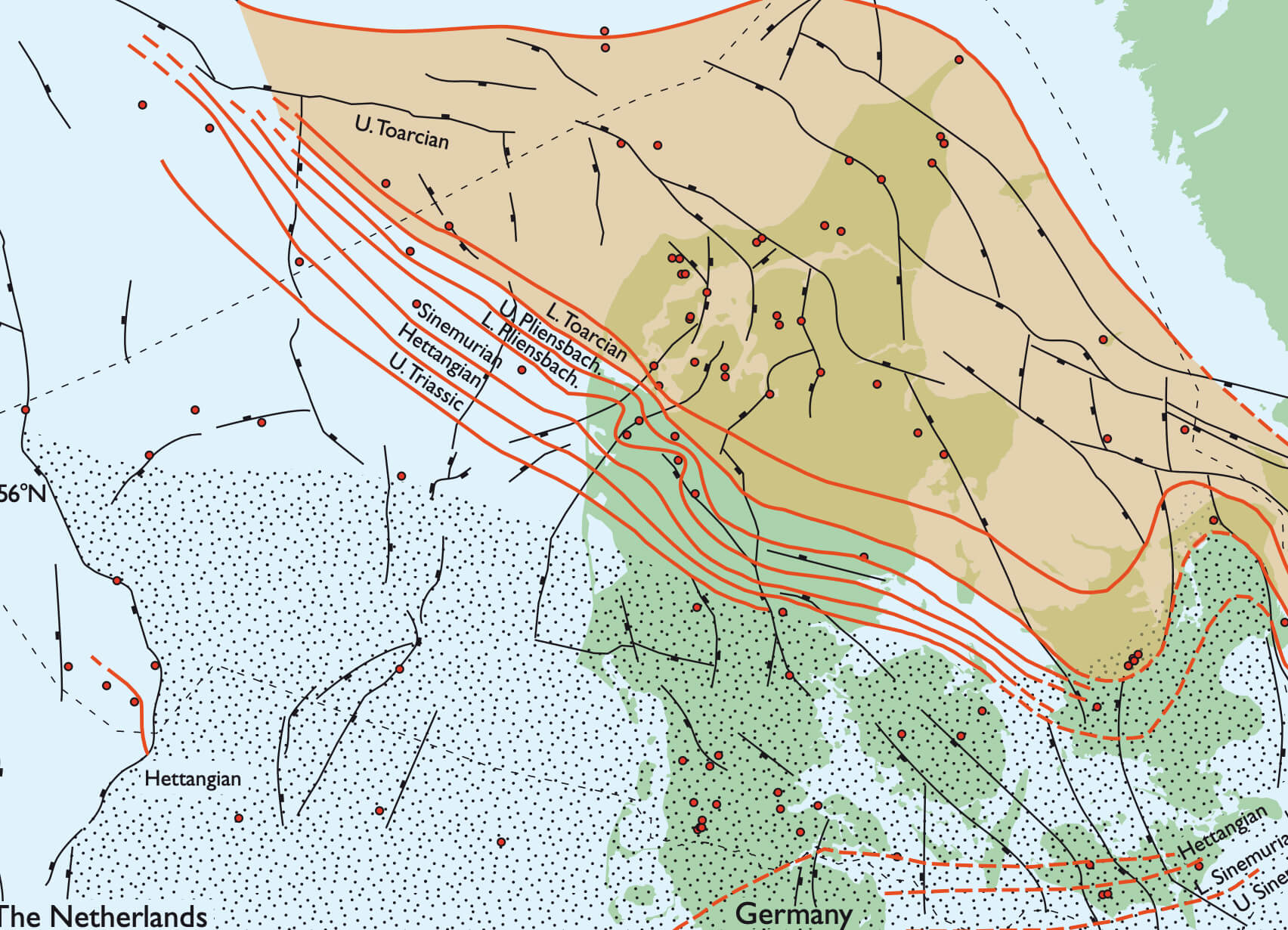
How to Cite
Share
Abstract
The quality, thermal maturity and distribution of potential source rocks within the Palaeozoic–Mesozoic succession of the Danish part of the Norwegian-Danish Basin have been evaluated on the basis of screening data from over 4000 samples from the pre-Upper Cretaceous succession in 33 wells. The Lower Palaeozoic in the basin is overmature and the Upper Cretaceous – Cenozoic strata have no petroleum generation potential, but the Toarcian marine shales of the Lower Jurassic Fjerritslev Formation (F-III, F-IV members) and the uppermost Jurassic – lowermost Cretaceous shales of the Frederikshavn Formation may qualify as potential source rocks in parts of the basin. Neither of these potential source rocks has a basinwide distribution; the present occurrence of the Lower Jurassic shales was primarily determined by regional early Middle Jurassic uplift and erosion. The generation potential of these source rocks is highly variable. The F-III and F-IV members show significant lateral changes in generation capacity, the best-developed source rocks occurring in the basin centre. The combined F-III and F-IV members in the Haldager-1, Kvols-1 and Rønde-1 wells contain 'net source-rock' thicknesses (cumulative thickness of intervals with Hydrogen Index (HI)> 200 mg HC/g TOC) of 40 m, 83 m, and 92 m, respectively, displaying average HI values of 294, 369 and 404 mg HC/g TOC. The Mors-1 well contains 123 m of 'net source rock' with an average HI of 221 mg HC/g TOC. Parts of the Frederikshavn Formation possess a petroleum generation potential in the Hyllebjerg-1, Skagen-2, Voldum-1 and Terne-1 wells, the latter well containing a c. 160 m thick highly oil-prone interval with an average HI of 478 mg HC/g TOC and maximum HI values> 500 mg HC/g TOC.
The source-rock evaluation suggests that a Mesozoic petroleum system is the most likely in the study area. Two primary plays are possible: (1) the Upper Triassic – lowermost Jurassic Gassum play, and (2) the Middle Jurassic Haldager Sand play. Potential trap structures are widely distributed in the basin, most commonly associated with the flanks of salt diapirs. The plays rely on charge from the Lower Jurassic (Toarcian) or uppermost Jurassic – lowermost Cretaceous shales. Both plays have been tested with negative results, however, and failure is typically attributed to insufficient maturation (burial depth) of the source rocks. This maturation question has been investigated by analysis of vitrinite reflectance data from the study area, corrected for post-Early Cretaceous uplift. A likely depth to the top of the oil window (vitrinite reflectance = 0.6%Ro) is c. 3050–3100 m based on regional coalification curves. The Frederikshavn Formation had not been buried to this depth prior to post-Early Cretaceous exhumation, and the potential source rocks of the formation are thermally immature in terms of hydrocarbon generation. The potential source rocks of the Fjerritslev Formation are generally immature to very early mature. Mature source rocks in the Danish part of the Norwegian–Danish Basin are thus dependent on local, deeper burial to reach the required thermal maturity for oil generation. Such potential kitchen areas with mature Fjerritslev Formation source rocks may occur in the central part of the study area (central–northern Jylland), and a few places offshore. These inferred petroleum kitchens are areally restricted, mainly associated with salt structures and local grabens (such as the Fjerritslev Trough and the Himmerland Graben).
How to Cite
Share
Copyright (c) 2008 Henrik I Petersen, Lars H Nielsen, Jørgen A Bojesen-Koefoed, Anders Mathiesen, Lars Kristensen, Finn Dalhoff

This work is licensed under a Creative Commons Attribution 4.0 International License.
Supplementary Files
Downloads
Henrik I. Petersen, Lars H. Nielsen, Jørgen A. Bojesen-Koefoed, Anders Mathiesen, Lars Kristensen and Finn Dalhoff *
The results of hydrocarbon exploration in the Norwegian–Danish Basin in northern Denmark over the past 70 years have been largely disappointing. Although the principal components of a viable petroleum system are in place, the [...]









